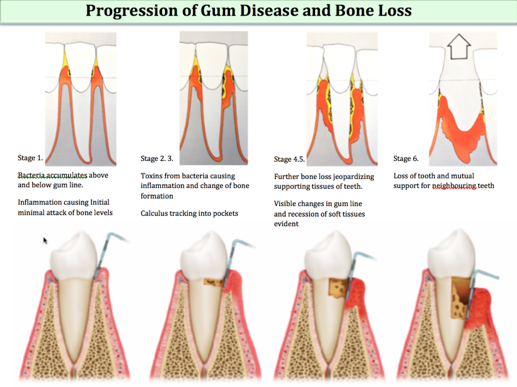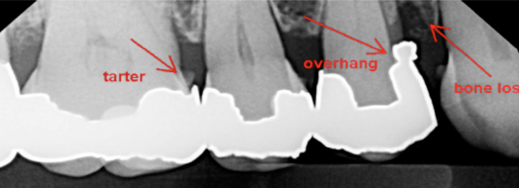
At any one given time four out of every five adults suffer from gum disease. Gum disease is never cured, it is only controlled by attention to detail and removal of plaque on a daily basis. However, if caught in the early stages it is entirely possible to control the progress of this endemic problem and keep your smile for life.
1. Bleeding while brushing your teeth
2. There may also be redness, swelling and unpleasant breath
3. Some people also experience an odd metallic taste in their mouth
4. Your teeth may also become highly sensitive to changes in temperature. The adverts for sensitive toothpaste should say “See your dentist and find out why they are sensitive.”
5. Exposure of root surfaces and the appearance of “longer” teeth

There is a cuff or collar of gum around every tooth we call a “pocket” and this forms a hiding place making it difficult to clean. The bacteria (plaque) irritates the soft gums causing inflammation. This inflammation slowly but surely eats away the bone. Over time this means the grip for the teeth is lost and the teeth get loose eventually falling out or needing extraction.
There are many factors that contribute to this process and we will look at these in following articles, including: Teeth that have tipped and tilted into the spaces of teeth that have been extracted and not replaced.
Poorly fitting fillings and restorations where food and bacteria may catch between them.

Health factors such as diabetes, pregnancy, dry mouth syndromes or drug therapies you may be taking. Even the physical inability to manipulate the toothbrush correctly.
Dietary factors: What you eat will influence both the type of bacteria and your body’s response to the bacterial build up.
First the problem must be identified and diagnosed. Your dentist can assess the degree of bone loss and depth of pockets around your teeth. They may use X-rays to assess the current levels of bone and keep these as a record to compare back to at a later date. Identifying contributory factors and correcting these will be an important part of the treatment. But removal of the bacteria, again and again and again is the mainstay of controlling your gum disease. This is a joint exercise between you, your dentist and your hygienist.
You need to learn the techniques and acquire the daily habits of good toothbrushing either manually or using an electronic toothbrush, correct daily flossing, appropriate mouth-washing. Your dentist and team will diagnose, advise and offer you the treatment needed to help you keep your teeth for life. If you don’t have a dentist, the best way to find one is to “ask a friend”.
Gate Dental Clinic Galway